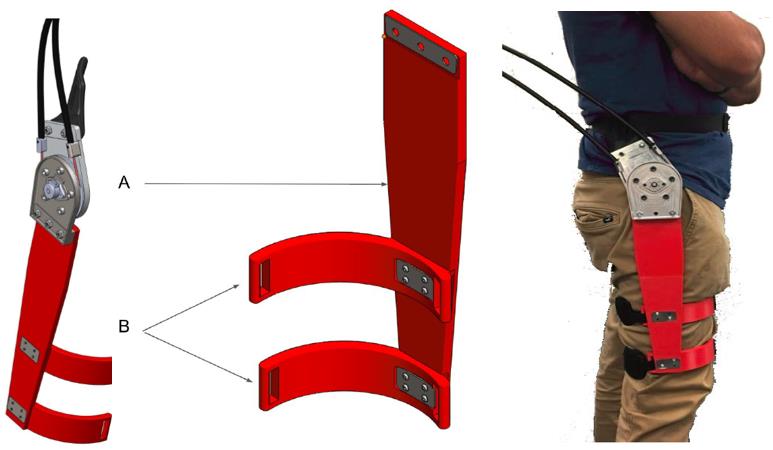Gait function is the most common form of physical activity. Elderly adults compensate for age-related decreases in physical capabilities by being more cautious and change their gait pattern [1]. Gait function in elderly adults is characterized by lower gait velocity; shorter step length; reduced range of motion at the hip, knee, and ankle joints; increased step variability; and a distal to proximal shift in joint torque production [2], [3]. This conclusion supports the need to develop specific strategies to improve gait function.
Nowadays, wearable devices designed to enhance a wearer’s lower extremities muscular strength are expected to be among the practical solutions to address the problems encountered by the aging population in society. There is many exoskeleton made but they all are costly, heavy and uncomfortable. So, to develop an exoskeleton we went through the three different concept. 1) conventional Rigid and Direct driven exoskeleton, 2) the soft type exoskeleton developed by Harvard university, 3) cable driven and semi-rigid exoskeleton by Samsung S- Assist L- type.
This paper presents a prototype design for a soft, backdrivable, cable-driven, hip exoskeleton for gait assistance in elderly persons. This design seeks to instantiate three paradigm shifts in exoskeleton robotics: 1) a shift from passive, rigid, and task-space oriented structures to a more compliant, active, joint-spaced design by utilizing cable-driven torque transmission and non-elastic soft straps; 2) a shift from heavy, resistive, and loud actuation to more transparent, backdrivable, and lightweight actuation by utilizing high torque density motors and low gear ratios; 3) a shift from slow and unintelligent control to responsive and intuitive control by utilizing intelligent gait detection and an assistive torque control strategy coupled with intelligent actuation.

Hip Exo
Leave a Comment